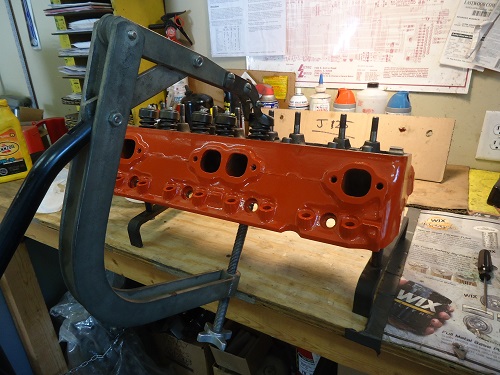327 Chevy Camshaft Installation
Article by Mark Trotta
Compared to other V8 engines, small-block Chevy cam and lifters wear pretty fast, particularly if they're over-revved and don't get regular oil changes.
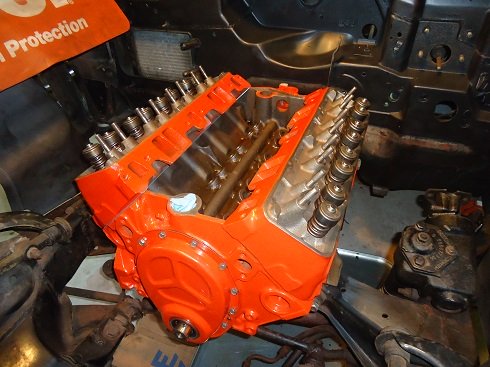
The engine featured in this article is a 300 horsepower 327 in a 1966 Corvette. All Gen-One small-blocks will follow this same procedure.
***********************
The factory camshaft for this L75 motor has been long discontinued and homogenized into GM #3896929, which is similar. Several companies offer this cam, including Crane "Blueprint" series.
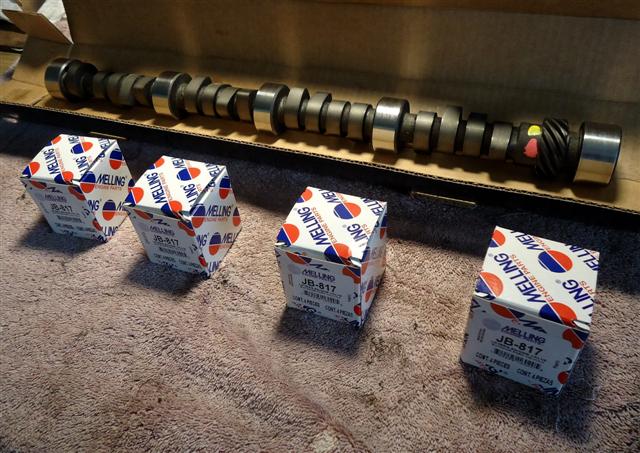
Read: SBC Camshaft Selection Guide
After a bit of research, a Melling MTC-1 cam kit was purchased. This kit came with American-made Johnson lifters.
The following stats show how close this cam is to the original:
- Intake Valve Lift: OE cam .390" vs Melling cam .422"
- Exhaust Valve Lift: OE cam .410" vs Melling cam .444"
- Intake Duration at .050" Lift: OE cam 195 vs Melling cam 204
- Exhaust Duration at .050" Lift: OE cam 202 vs Melling cam 204
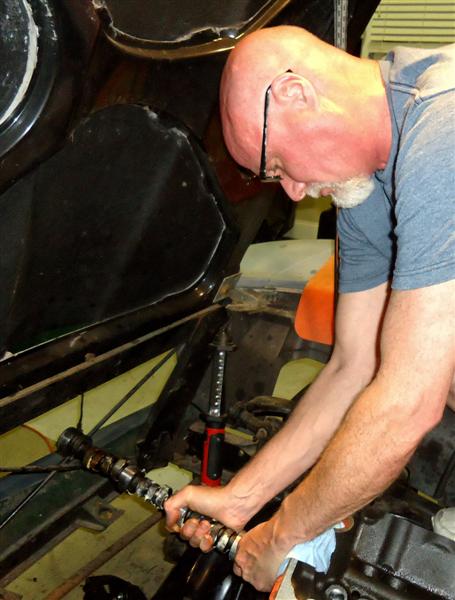
Gen-One SBC Camshaft Removal
***********************
Cam Bearings
Before the new cam was installed, the bare block was taken to a local machine shop, and the old cam bearings (along with freeze plugs) were removed.
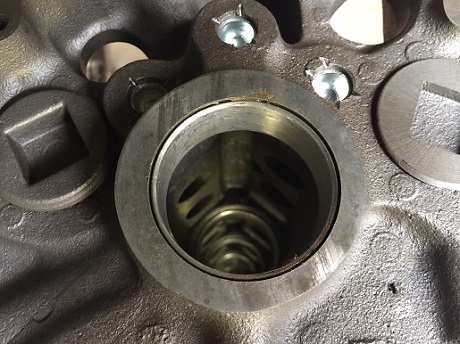
The block was then cleaned (hot-tanked), cylinders bored .030" over, and new cam bearings and freeze plugs installed.
***********************
Step-By-Step Camshaft Installation
Clean and lube the new cam before installation. Most cam and lifter kits include assembly lube.
Coat the cam lobes, distributor gear, and fuel pump lobe completely, but not excessively.
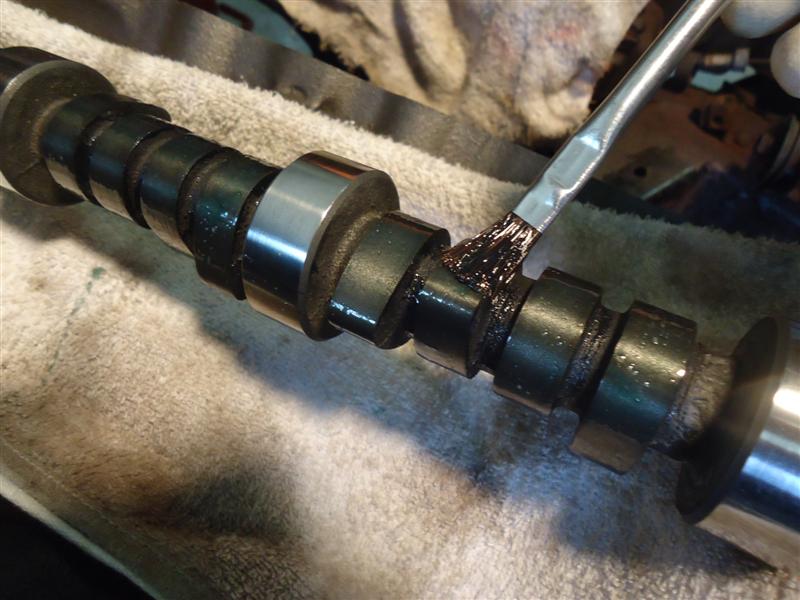
The cam bearing journals were lubed with conventional SAE 30W oil.
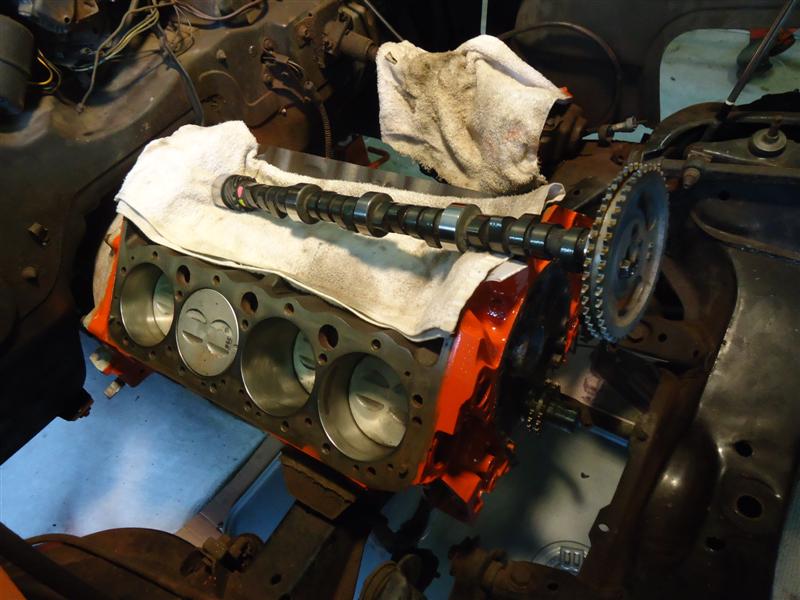
The cam gear is temporarily installed with just one hand-tightened bolt. This allows us to use the cam gear as a "handle" and help guide the cam into the block.
Caution: Care must be taken not to nick the new cam bearings.
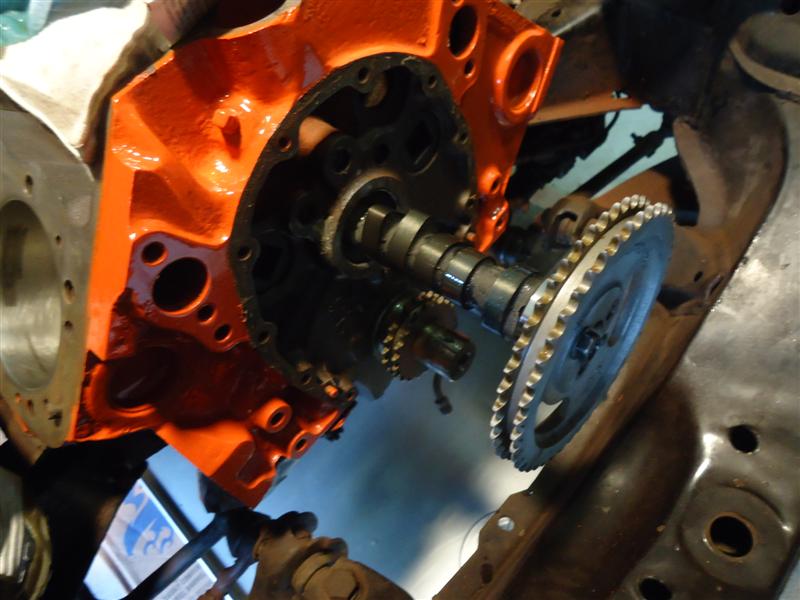
After the cam is in the block, remove the cam gear. The timing chain and two gears go on as an assembly.
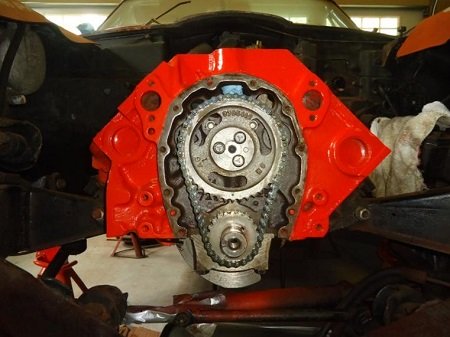
Read: 327 Timing Chain Installation
***********************
Engine Break-In Oil
Lucas 10631 SAE 30 is a high-zinc break-in oil used for flat tappet camshaft break-in. No moly supplement or additional additives are needed with this oil. Not recommended for passenger cars with catalytic-equipped emissions controls.
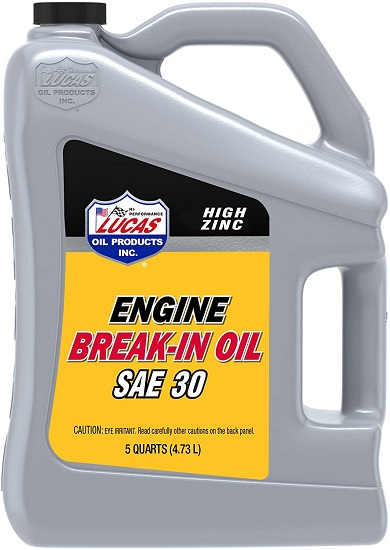
Shop: High Zinc Break-In Oil
Classic Car Engine Oil
The 10W-30 oil your car left the factory with is not the same 10W-30 that you buy today. There are more flat-tappet hydraulic cam failures than ever before, brought about by inferior foreign lifters as well as the removal of ZDDP additives from motor oils.
Read: Best Oil for Classic Cars
***********************
Articles of Interest:
1966 Corvette Project
327 Chevy Build
SBC Camshaft Selection Guide
Best Engine Assembly Lube
Tools Needed For An Engine Build
